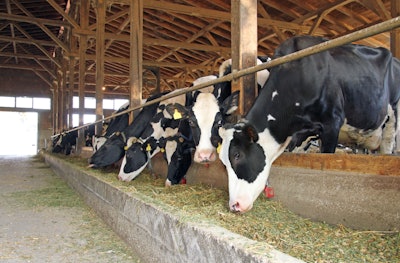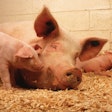
The U.S. Food and Drug Administration’s (FDA) Center for Veterinary Medicine (CVM) has published itsAnimal and Veterinary Innovation Agenda(AVIA), which is says will help “regulated industries bring safe products to market that meet the challenges we are facing in animal industries and as a society.”
In recent months, there have been calls from companies and groups, including the American Feed Industry Association (AFIA),for the CVM to streamline processesin evaluation and approval for certain animal feed ingredients to reflect evolving scientific knowledge and promote innovation.
“CVM recognizes that human, animal and environmental health are connected, and that innovative transdisciplinary approaches and technologies hold great potential to address challenges across these sectors,” the document says. “CVM wants to facilitate animal and veterinary product development across the board and see more safe, novel products and products for unmet human and animal needs – such as zootechnical food substances, monoclonal antibody therapies, gene therapies, intentional genomic alterations (IGAs) in animals, cell-based animal foods, and animal cell and tissue-based products – reach the market.”
Zootechnical food substancesrefer to novel food ingredients that function in the gut of the animal to affect qualities like feed efficiency, reduced waste output, or reduced pathogens in food products made from the animal. These includefeed additives that reduce methane emissions in cattle, for example.
“Novel technologies brought to the forefront in recent years have the potential to set a new course for the way veterinarians and food producers support human and animal health. The FDA is committed to helping developers bring products that enhance public health, animal health and food production to market while providing consumers with confidence that they meet the FDA’s high standards,”said FDA Commissioner Robert Califf. “This comprehensive agenda is intended to accelerate smart regulatory pathways and enhance continued public confidence in the FDA’s regulation of these products, while avoiding unnecessary barriers to future industry advancements.”
In the AVIA, CVM lists six areas where it is particularly interested in seeing products that address “critical animal, human and societal needs”:
- Products to increase the resilience and health of animals, such as products that can help animals be more resilient to heat or other environmental stresses.
- Products that can increase the efficiency of our food supply, such as zootechnical feed substances that can make feed conversion more efficient and reduce waste byproducts.
- Products to address unmet veterinary medical needs in major species that create a significant animal health burden, such as new treatments for cancer, cardiac disease, chronic renal failure, and pain control in food animals.
- Products that address unmet needs in minor species, such as new products for disease threats to fish and small ruminants.
- Products with novel mechanisms of action or novel technologies where there is a translational benefit to human and animal medicine.
- Products to address increasing animal and human disease threats, such as products that can prevent, control and treat diseases such as African swine fever.
Key objectives of the AVIA are to support technologies and products that address high-priority needs, align regulatory pathways to the modern landscape, enhance the One Health workforce for the future of innovation, and identify and address gaps specific to new technologies and emerging health threats.
This includes creation of a CVM Regulatory Modernization Task Force “to review and recommend changes to law and policy, such as through changes to regulations and guidance documents, that align with CVM’s commitment to sensible science- and risk-based regulation.提议的立法变化to the Federal Food, Drug, and Cosmetic Act (FD&C Act), such as the introduction of new approval paradigms for zootechnical animal food substances and biologic products for animals, hold promise to create evaluation and approval pathways that are appropriate for novel FDA-regulated product types,” the AVIA says.
The objectives also include working with external stakeholders to identify potential process improvements including exploring ways to increase efficiency in the review process across all of CVM’s portfolio.




















